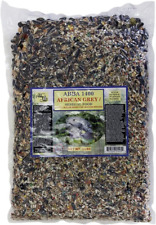Five Steps to Better Feline Friendship

He did it. And you, too, can learn to you coax even reticent felines out from under the bed, from the closet or other secret hiding spots for some quality time.
No Two Are Alike
To learn to bond with your kitty, you first need to understand that felines – like humans – have different personalities. Dr. Dodman, author of the feline psychology book, The Cat Who Cried for Help (Bantam), says that feline personalities can be divided along three main measures: alertness, equability and sociability. Cats that are active, calm and don’t mind being around people are the easiest to win over. But there are ways to win over even the most reclusive, irritable or the lazy cat and make it your friend and companion.
"Never force a cat to do anything. Never bother your cat. And never punish your cat," warns Dr. Dodman. "But if every time you’re around good things happen – exercise, petting, food – the cat will love you to death."
Here are five steps to cement a feline friendship:
Step # 1: Tempt Them with Treats
The way to a cat’s heart is through its stomach, says Bonnie Beaver, DVM, past president of the American Veterinary Medicine Association and a professor at Texas A&M University. "A lot of cats are interested in people because people feed them," she says. Former strays, or feral cats, may not emerge when you put down the food bowl, but they may be encouraged to come closer over time. Feeding a cat simulates a parental role – it’s what mother cats do for their kittens – and can help bonding. With Dr. Dodman’s two cats, he waited until they were hungry and emerged from the attic before he slid a treat across the floor to coax them to come out in public. Every day, he moved the treats closer and closer to family members. The cats followed and eventually learned to enjoy the attention.
Step # 2: Frolic with Your Kitty
Indoor cats need exercise. One of the best ways for your kitty to get active is by playing with you. Whether you drag a string in front of them or hold a toy out of reach, their curiosity may get the best of them. Anything that moves fast will spark that feline hunting instinct. The lion within may also emerge – they may pounce or claw so be careful not to have your hand too near. "It’s especially fun for an owner to get down on the floor and interact," Dr. Beaver says. During playtime, it may also be comforting to talk to your cat, providing you do so in a soothing tone.
Step # 3: Teach Your Cat New Tricks
Dogs aren’t the only domestic pets that can learn to sit and raise a paw. Cats, Dr. Dodman says, are also trainable if an owner has patience. "You can teach a cat to jump up and jump down or how to run through a tube," he says. Popular methods for training cats include using food rewards or a handheld "clicker" device to make a sound when the cat does something correct. Dr. Dodman has heard of cats being trained by the clicker method to turn a light switch off or on by command. Even if your goals are simpler, such as getting your cat to give a high-five, training can cement a mutual appreciation.
Step # 4: Personal Touch for Your Pet
Many cats enjoy being petted down the back, scratched behind the ears or gently combed. You can usually tell what your pet enjoys once your little friend starts kneading with its paws, or purring in contentment. "It is said that the two things a mother cat does with its kittens is to groom them by licking with her tongue and to feed them," Dr. Dodman says. "You can take on this parental role by feeding and petting your cat." Don’t scare away your feline by combing roughly or introducing static electricity, Dr. Beaver warns.
Step # 5: Break Out the New Toys
Stores carry a wide variety of chase toys, stuffed animals and rod-and-reel lures. You can also make your own. "Anything on the end of a string that will bounce up and down is something the cat can bat at," Dr. Beavers says. "They also like little balls that will roll, or toys that the cat gets to chase." Invest in a variety of new toys. "Don’t leave the entire collection of toys out all the time," she advises. "Mix them up so that they kind of become new toys for your cat all over again."













